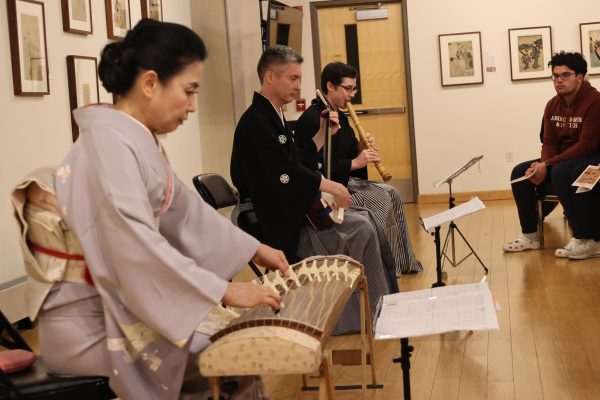History Of Dances At Misericordia
November 25, 2019
According to past and present students, dances have changed at Misericordia University.
Susan Bernini, a 1968 graduate of College Misericordia with a bachelor’s degree in nursing, returns to campus on occasion. She said when she visits, “It’s like I was there yesterday.”
Bernini explained when she was in college, Misericordia was an all-female college, so dances worked a little differently. She said there were “mixed dances” where students from other religious colleges would attend, as well. Those four religious colleges in the area were College Misericordia, King’s College, Marywood and University of Scranton.
Colleges would “bus” students to college dances. Bernini remembers Misericordia using a blue bus to transport students to other campuses for dances.
“They presented opportunities for guys from King’s and Scranton to mix with the Misericordia gals,” she said.
Bernini also explained that dances were held regularly on campus.
“I don’t recall that there were themes,” she said. “It was a Friday night dance or a Saturday night dance.”
Bernini recalled that at the dances there were DJs who played vinyl 45s. Each 45 record had a song and the music range was wide. The Beatles, the Beach Boys, the Temptations and the Supremes were no strangers to the dances she attended.
During Bernini’s time studying on campus, types of dances like the Twist, the Stomp and the Mashed Potato seemed to be all too common, with the Twist being the most popular.
Dances were held in the cafeteria like they are commonly now, with the attire being blouses and skirts, regular attire for college students at the time.
Bernini has a few memories of dances that left an impact on her. At one, she met a boy and had been given a pin from his college, a very common practice at the time. She said the relationship didn’t stand the test of time, but it “added a dimension that was very special.”
Mike Gombita, a 2017 graduate who is now a digital media graduate assistant, also recalled his dance experiences, which were somewhat different from Bernini’s. He stated there were a large amount of dances during his freshman but things began to decline after that.
He said dances now are very similar to how they were when he graduated. He believes there are reasons as to why that is, whether they can be foreseen or not.
“I’m a firm believer that promotion is everything,” Gombita said. “Sometimes dances were not promoted the best.”
He also said timing can be a factor, mentioning how dances are sometimes scheduled on the same day as other popular campus events. Gombita also believes it could be cost for some dances, especially formals.
He said the best way to help solve this situation is to listen to the students, saying dances should be about “seeing what students want and what students want to do.”
Darcy Brodmerkel, director of student engagement, is very determined to keep dances alive and popular on campus. She said a lot of dances and other opportunities are posted on social media, which she claims has a good presence around campus.
She explained the DJ of dances today can be a very important part of a dance’s success.
“We have very diversified music genres that people like,” says Brodmerkel.
She is open to students wanting new dances but wants to have one or two annual dances that students get excited about attending.
“I think if we can bring back that tradition again, whether formal or a couple of different themed dances, then maybe people would be willing to come out again,” she added.
Brodmerkel is open to new ideas on how to get more students involved with on-campus events and is hopeful that students “come back and dance the night away.”

